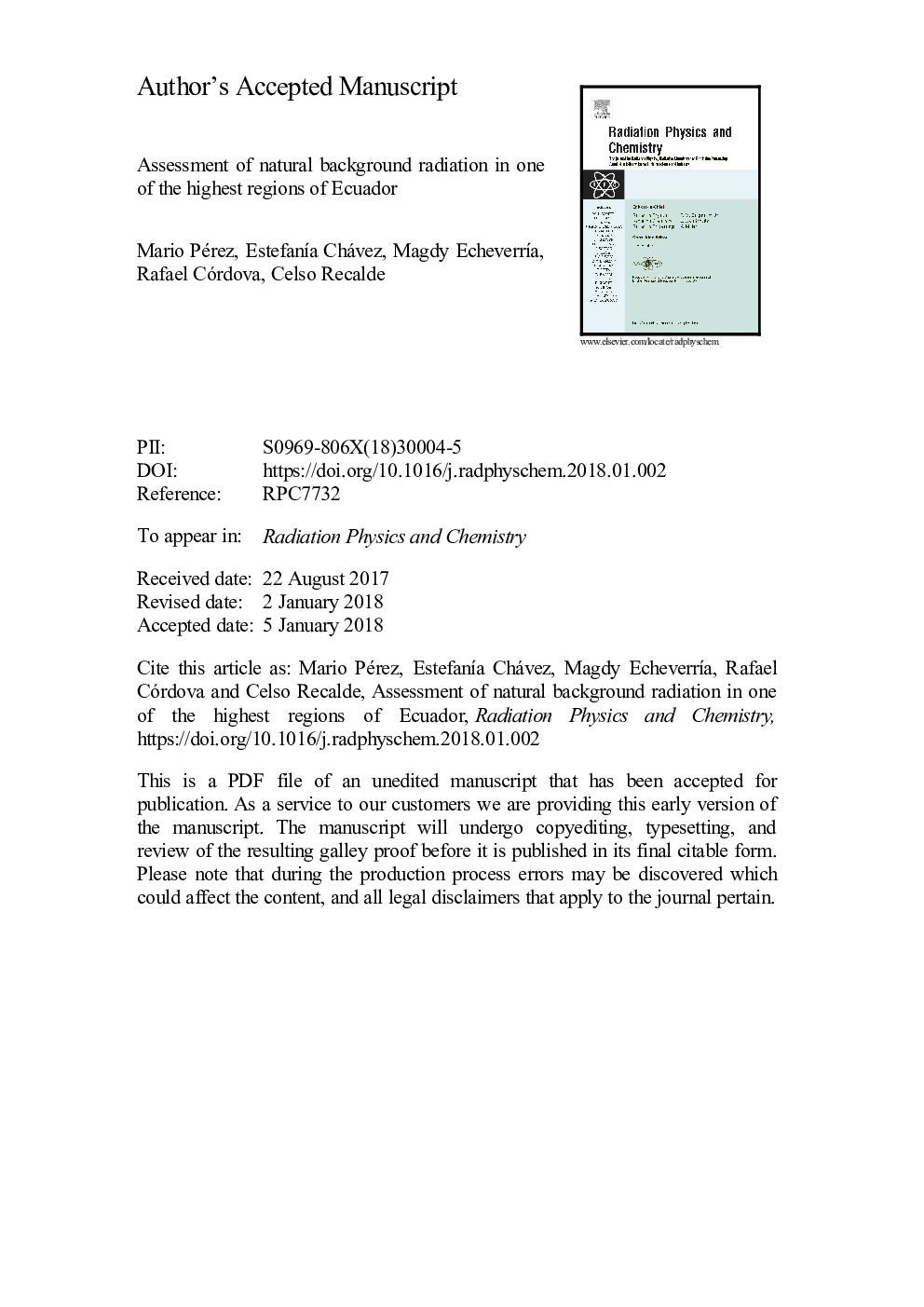| Article ID | Journal | Published Year | Pages | File Type |
|---|---|---|---|---|
| 8251439 | Radiation Physics and Chemistry | 2018 | 13 Pages |
Abstract
Natural background radiation was measured in the province of Chimborazo (Ecuador) with the following reference coordinates 1°40'00''S 78°39'00''W, where the furthest point to the center of the planet is located. Natural background radiation measurements were performed at 130 randomly selected sites using a Geiger Müller GCA-07W portable detector; these measurements were run at 6 m away from buildings or walls and 1 m above the ground. The global average natural background radiation established by UNSCEAR is 2.4 mSv yâ1. In the study area measurements ranged from 0.57 mSv yâ1 to 3.09 mSv yâ1 with a mean value of 1.57 mSv yâ1, the maximum value was recorded in the north of the study area at 5073 metres above sea level (m.a.s.l.), and the minimum value was recorded in the southwestern area at 297 m.a.s.l. An isodose map was plotted to represent the equivalent dose rate due to natural background radiation. An analysis of variance (ANOVA) between the data of the high and low regions of the study area showed a significant difference (p < α), in addition a linear correlation coefficient of 0.92 was obtained, supporting the hypothesis that in high altitude zones extraterrestrial radiation contributes significantly to natural background radiation.
Related Topics
Physical Sciences and Engineering
Physics and Astronomy
Radiation
Authors
Mario Pérez, EstefanÃa Chávez, Magdy EcheverrÃa, Rafael Córdova, Celso Recalde,
